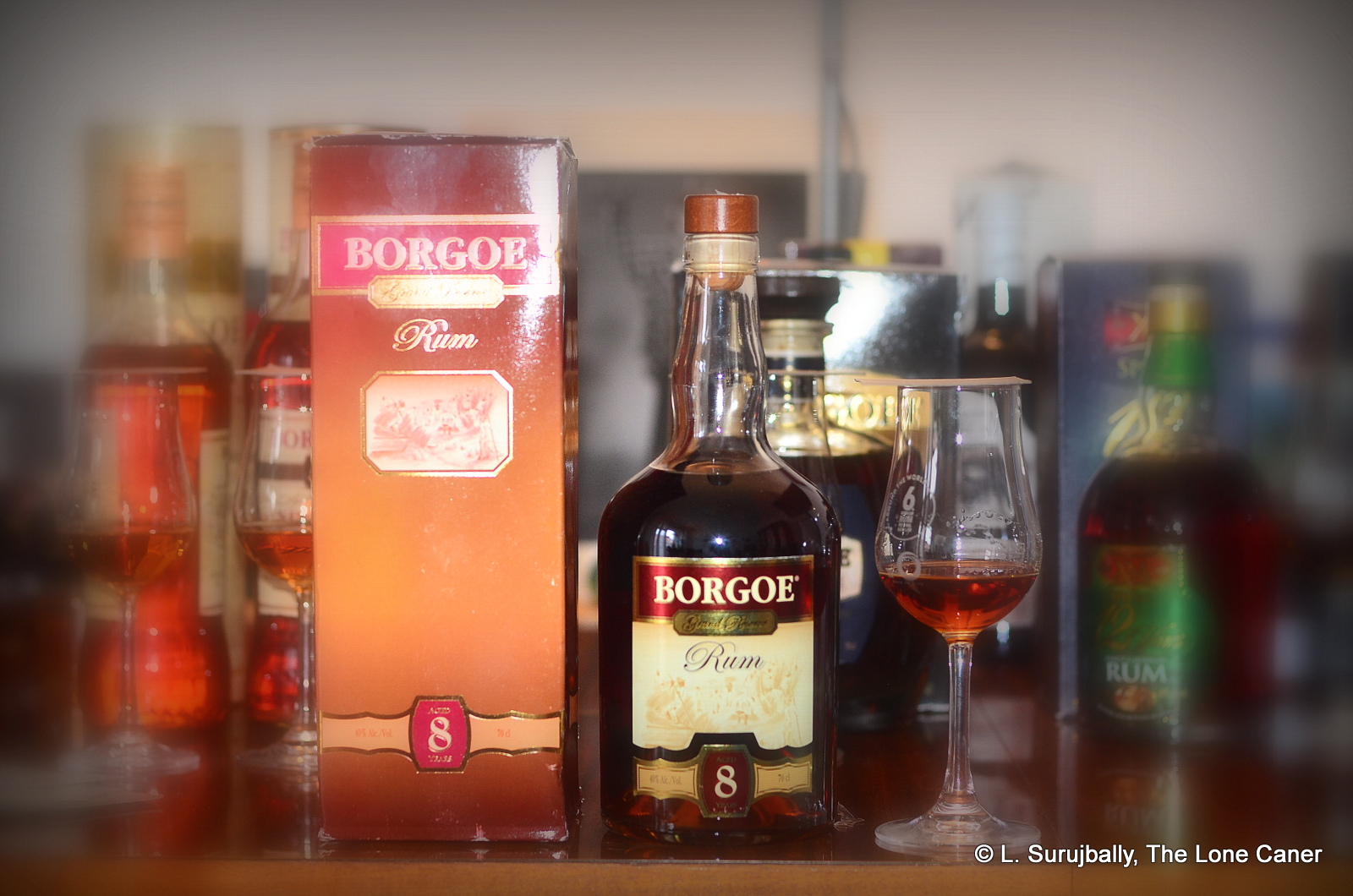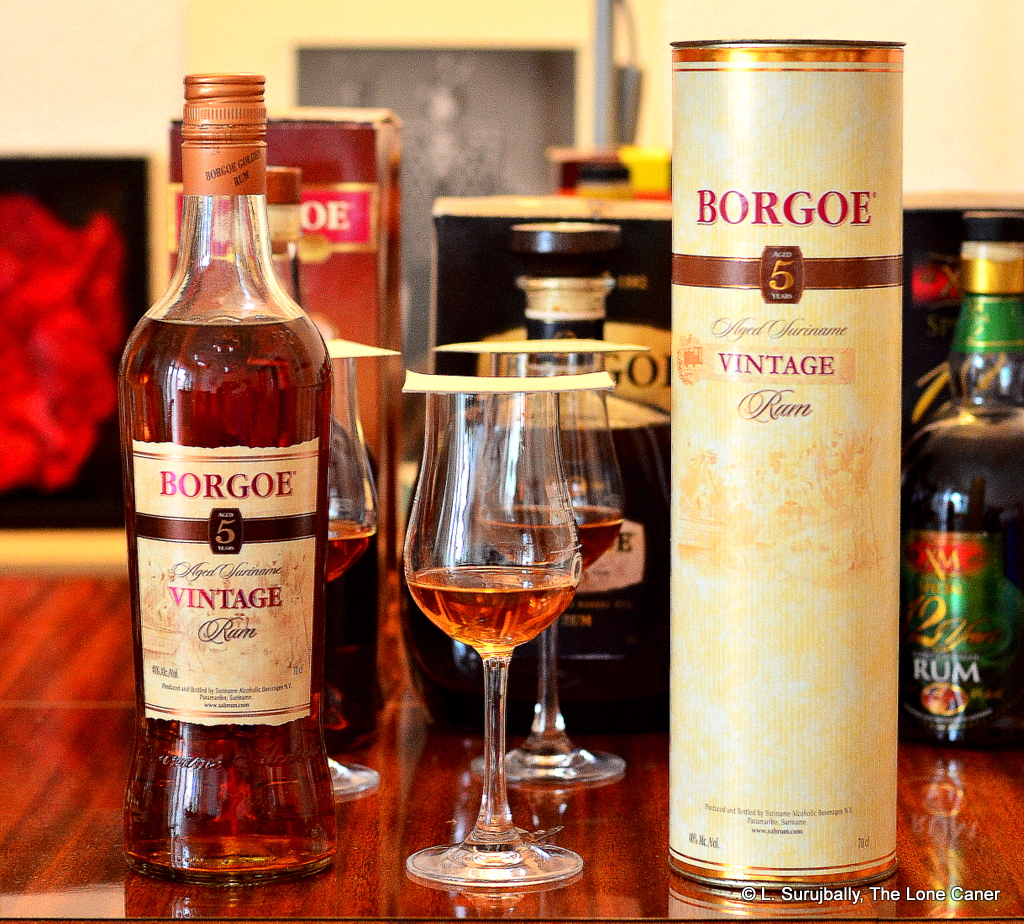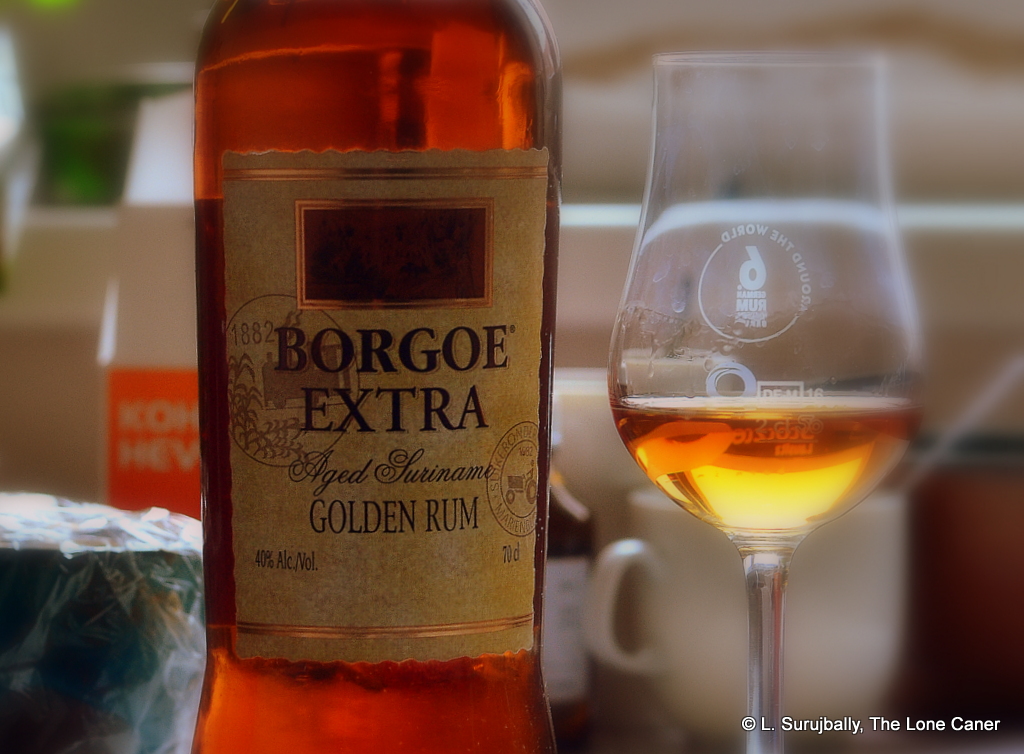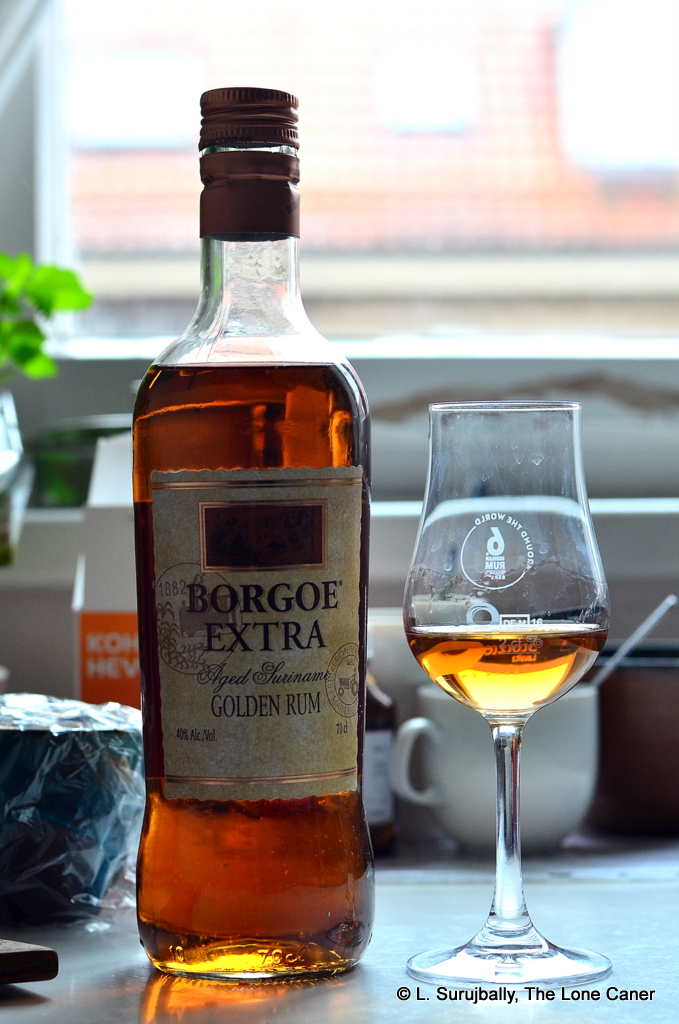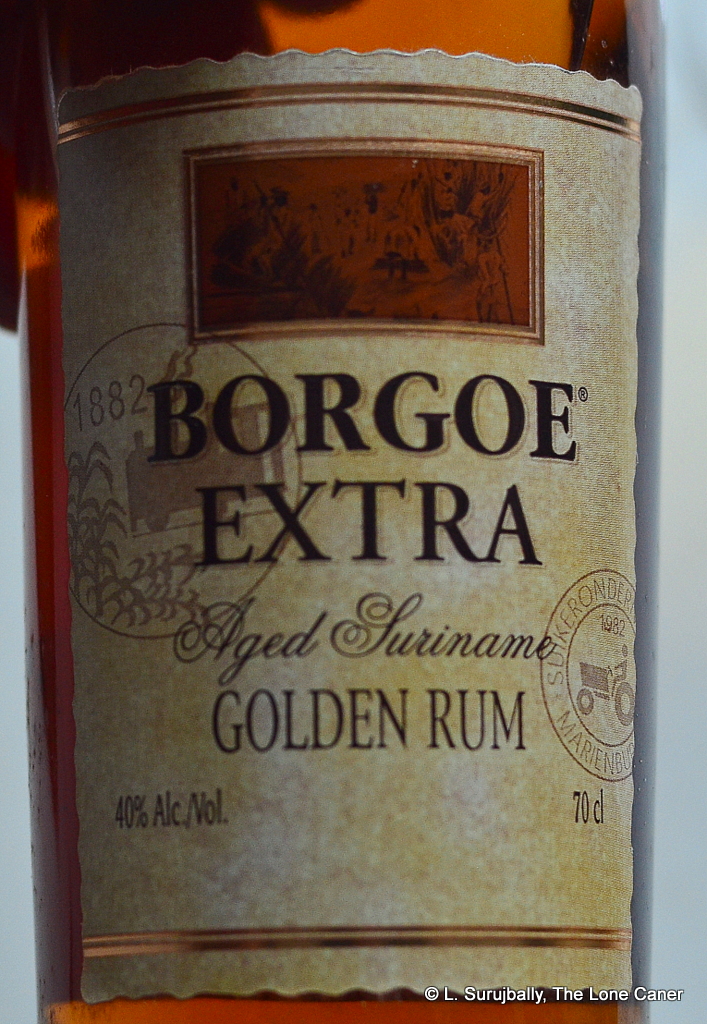#371
While SAB, the only real commercial rum producer in Suriname, makes competent blends and some very nice aged work (like the 8 year old from last week), it suffers, if the word can be used, from the following: a competitor to up the ante and push them harder within their own country; higher proof offerings as part of a connoisseur’s cabinet; a range of true single cask rums that highlights a particular point of interest in an overall oevre; and most of all, as I noted way back in the Extra Gold, that particular note of terroire that would mark it out and set it apart from, and over, more common table tipple.
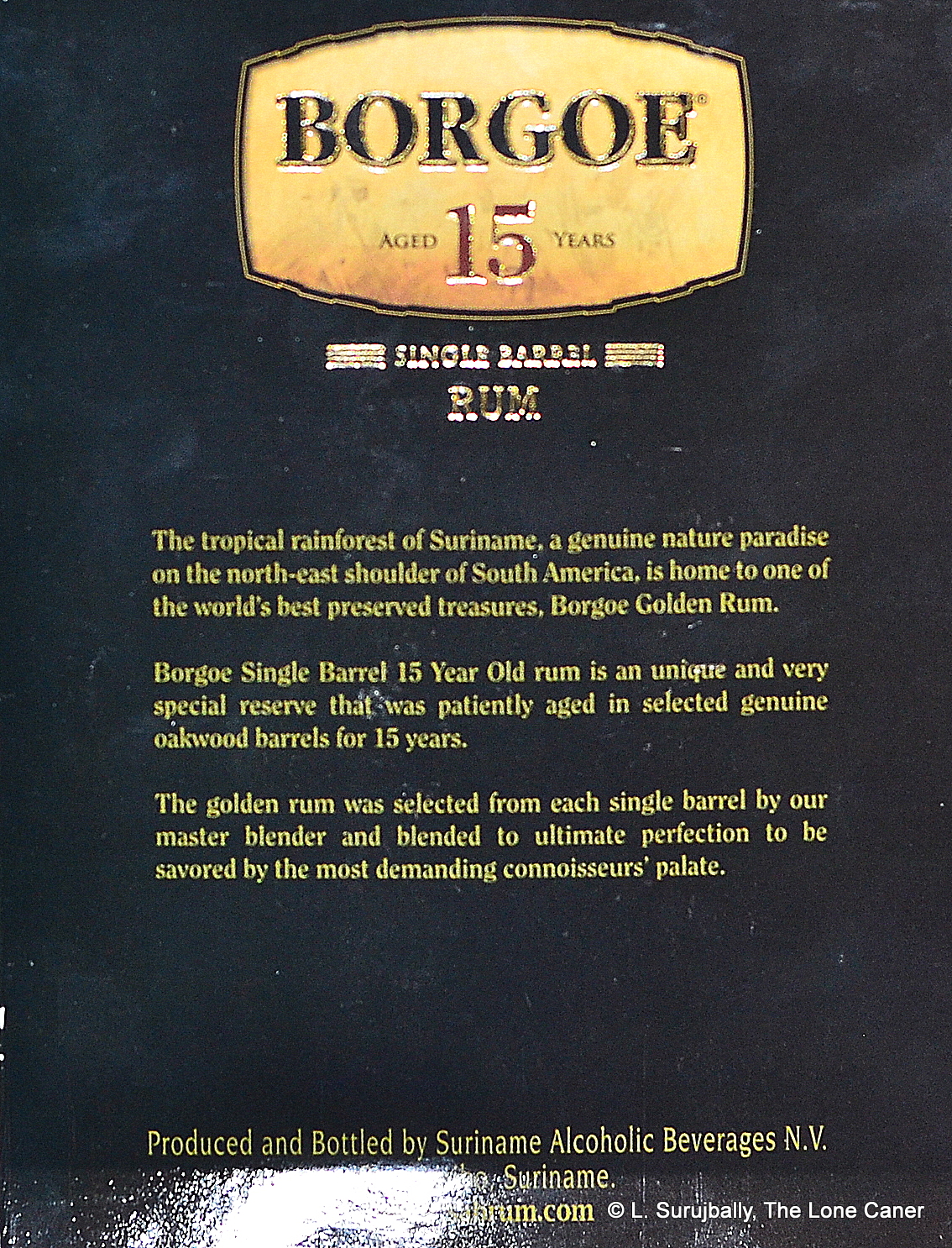 Which is not to say they’re bad – far from it. The Borgoe 8 year old was a nice step up from the earlier, younger editions, and now the 40% 15 year old takes it to its own new level, even adding a filip of individuality, because it is stated to be a single barrel aged rum — although unfortunately I’m unable to ascertain what the outturn was,or even if it is issued on a semi-regular basis. The fact that no year is mentioned on the label – single barrel rums by their nature tend to extol a year of make and a volume of bottles issued as a bare minimum – suggests that the moniker may either be totally incorrect or it’s poor advertising / quality control…because you can be sure that no independent bottler would ever make such an error.
Which is not to say they’re bad – far from it. The Borgoe 8 year old was a nice step up from the earlier, younger editions, and now the 40% 15 year old takes it to its own new level, even adding a filip of individuality, because it is stated to be a single barrel aged rum — although unfortunately I’m unable to ascertain what the outturn was,or even if it is issued on a semi-regular basis. The fact that no year is mentioned on the label – single barrel rums by their nature tend to extol a year of make and a volume of bottles issued as a bare minimum – suggests that the moniker may either be totally incorrect or it’s poor advertising / quality control…because you can be sure that no independent bottler would ever make such an error.
Anyway, beyond those issues, let’s take things at face value and simply accept it as a column still blend based on non-Surinamese molasses, blended from various barrels of fifteen year old reserves, issued at a milquetoast 40%, and if you’ll forgive my rampant and unconfirmed speculation, with some pot still juice mixed in there for a little edge and torque. The question is, was it any good?
Yes, and it’s very much the best of the lot, even edging out the Banks DIH Supreme 15 year old, with which it shared several points of similarity. Even at 40% the difference between the various standard rums I was trying was quite impressive – creamy cereals and milk, oranges and caramel, all emerged to waft around the nose, at once. There were the scents of walnuts, coconut, tobacco, and the fruitiness of cherries and peaches in cream, with a few flower petals and nougat thrown in for good measure. And behind it all, barely noticeable, a queer clean sheen of something clear and bright and metallic, almost agricole-like….that’s the edge I was talking about, the point of distinction I liked.
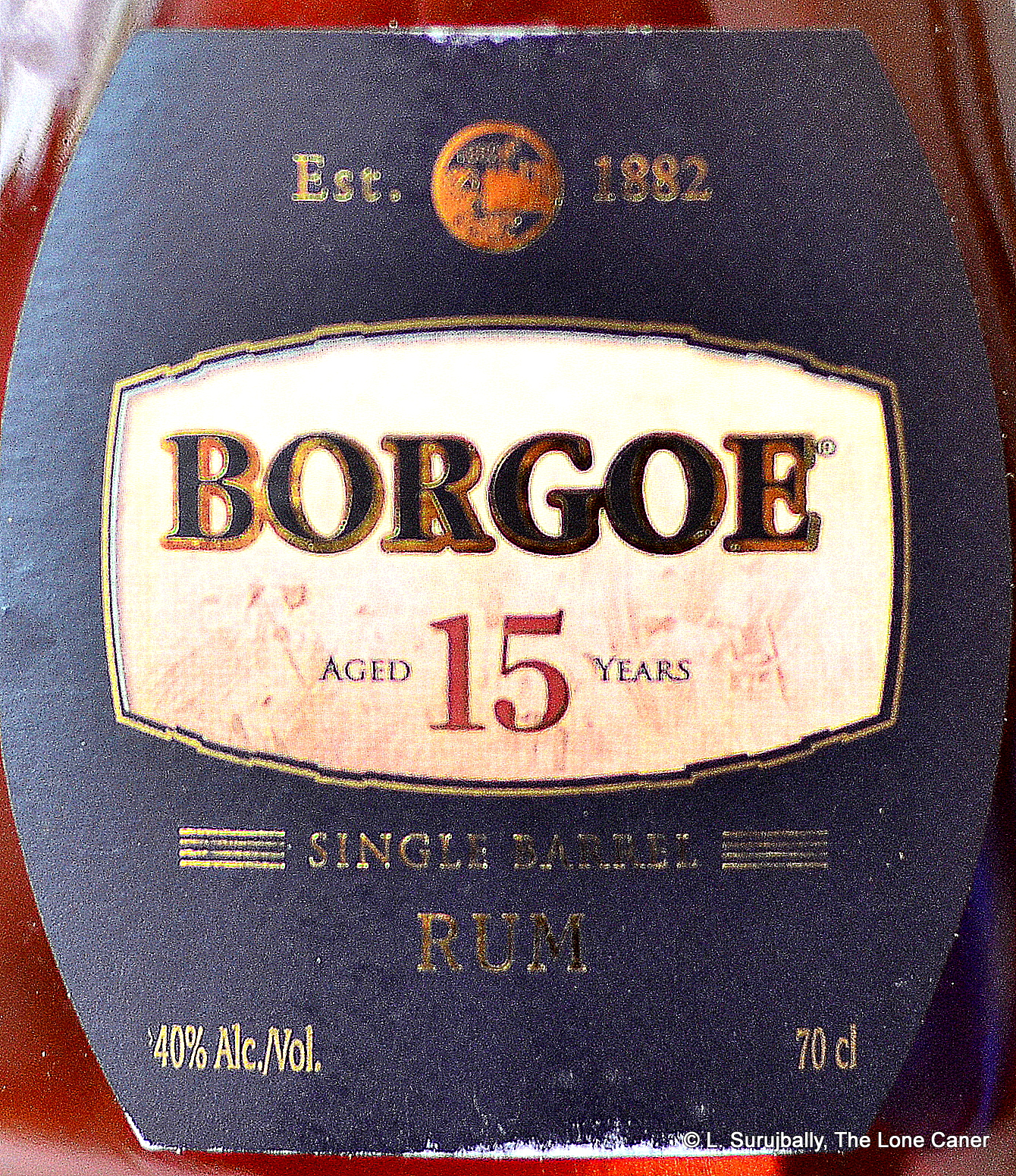 Tasting it was also a pleasant experience, warm and smooth and with a fine texture – it actually presented with somewhat more heft than one would expect. It was fruity, flowery and musky, all at the same time, redolent of aromatic cigarillos (those port-infused ones I used to like at one point in my life). Leading off were ripe cherries and tart yellow mangos, apricots, plums and vanilla, with enough of the sharper oak influence to give it some kick. It was vaguely (but in no way overbearingly) sweet, and with a drop or two of water provided some additional sage and nutmeg, burnt brown sugar, molasses and caramel, plus that faint but clear metallic brightness. Full proof it might not have been, but I had few complaints about what they had managed to achieve. Only the finish was somewhat of a let-down, being rather short and quick, if easy and warm and without anything new being added to the experience…sort of like an ex-girlfriend’s cheerful goodbye kiss – she knows you well enough to give you a good one, but doesn’t care enough to give you the full treatment, know what I mean?
Tasting it was also a pleasant experience, warm and smooth and with a fine texture – it actually presented with somewhat more heft than one would expect. It was fruity, flowery and musky, all at the same time, redolent of aromatic cigarillos (those port-infused ones I used to like at one point in my life). Leading off were ripe cherries and tart yellow mangos, apricots, plums and vanilla, with enough of the sharper oak influence to give it some kick. It was vaguely (but in no way overbearingly) sweet, and with a drop or two of water provided some additional sage and nutmeg, burnt brown sugar, molasses and caramel, plus that faint but clear metallic brightness. Full proof it might not have been, but I had few complaints about what they had managed to achieve. Only the finish was somewhat of a let-down, being rather short and quick, if easy and warm and without anything new being added to the experience…sort of like an ex-girlfriend’s cheerful goodbye kiss – she knows you well enough to give you a good one, but doesn’t care enough to give you the full treatment, know what I mean?
So all in all, a reasonably complex, well balanced rum which is nice to sip, a decent and very competent product by any standard. I want to make clear that as the top of the line, the Borgoe 15 year old is not a common bathtub hooch which plays it safe and doesn’t go anywhere spanking new – it’s too well made for that. But in the end, it remains a column still blend, it retains that unadventurous strength (not 46% or even 43% both of which can almost be seen as the evolving standards), and has only some of the force and uniqueness and intensity about it that would immediately mark it out as something special. Something special like a rum specifically Surinamese. Something special like a rum we must have. And that’s a shame, because with some effort and courage — some more oomph, so to speak — I would surely have marked it even higher, and liked it even more, than I actually ended up doing.
(85/100)
Other notes
- I deliberately included the word “blended” in the title even though it’s not on the label, in order to not give the misleading impression that it is a true Single Barrel rum (as defined by common useage).

